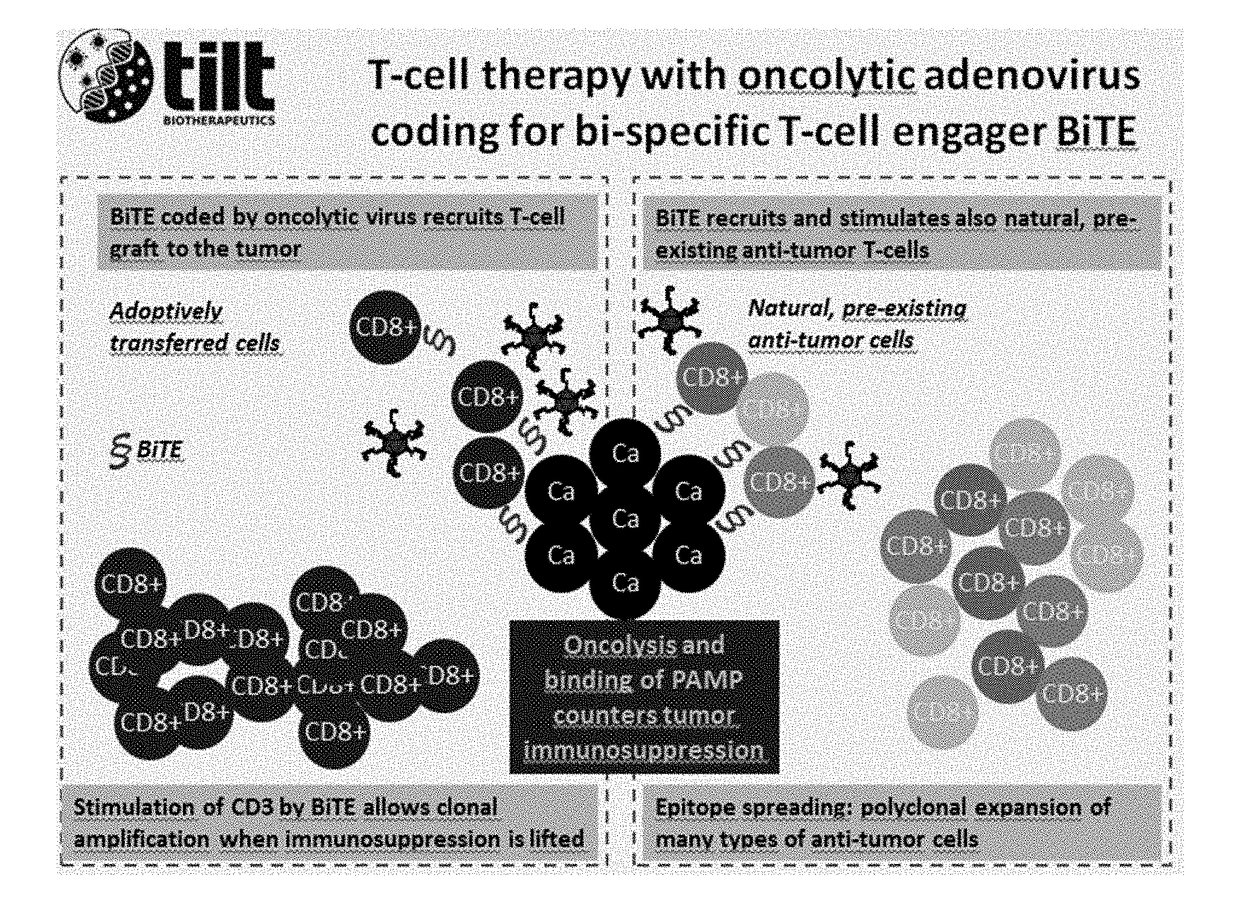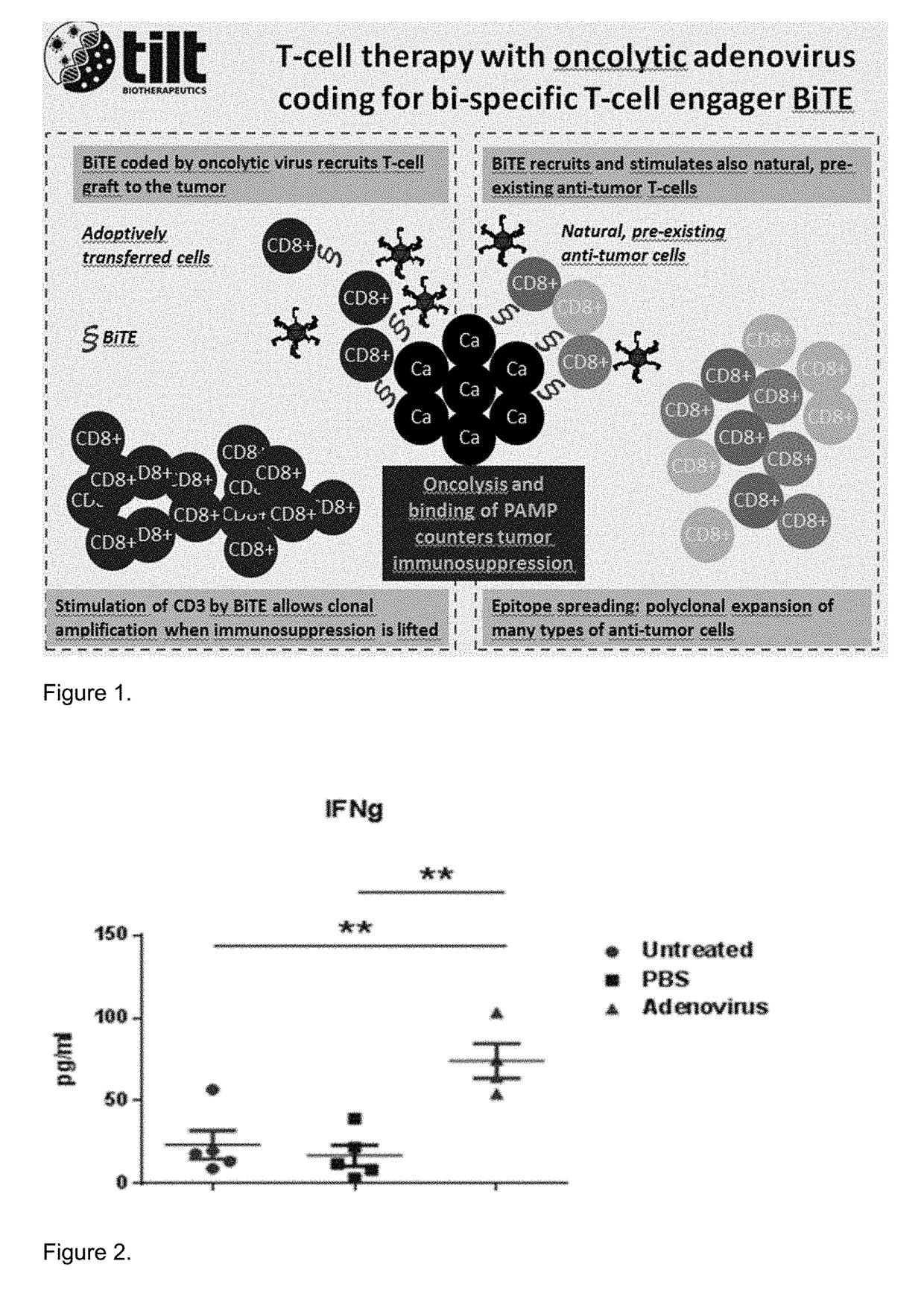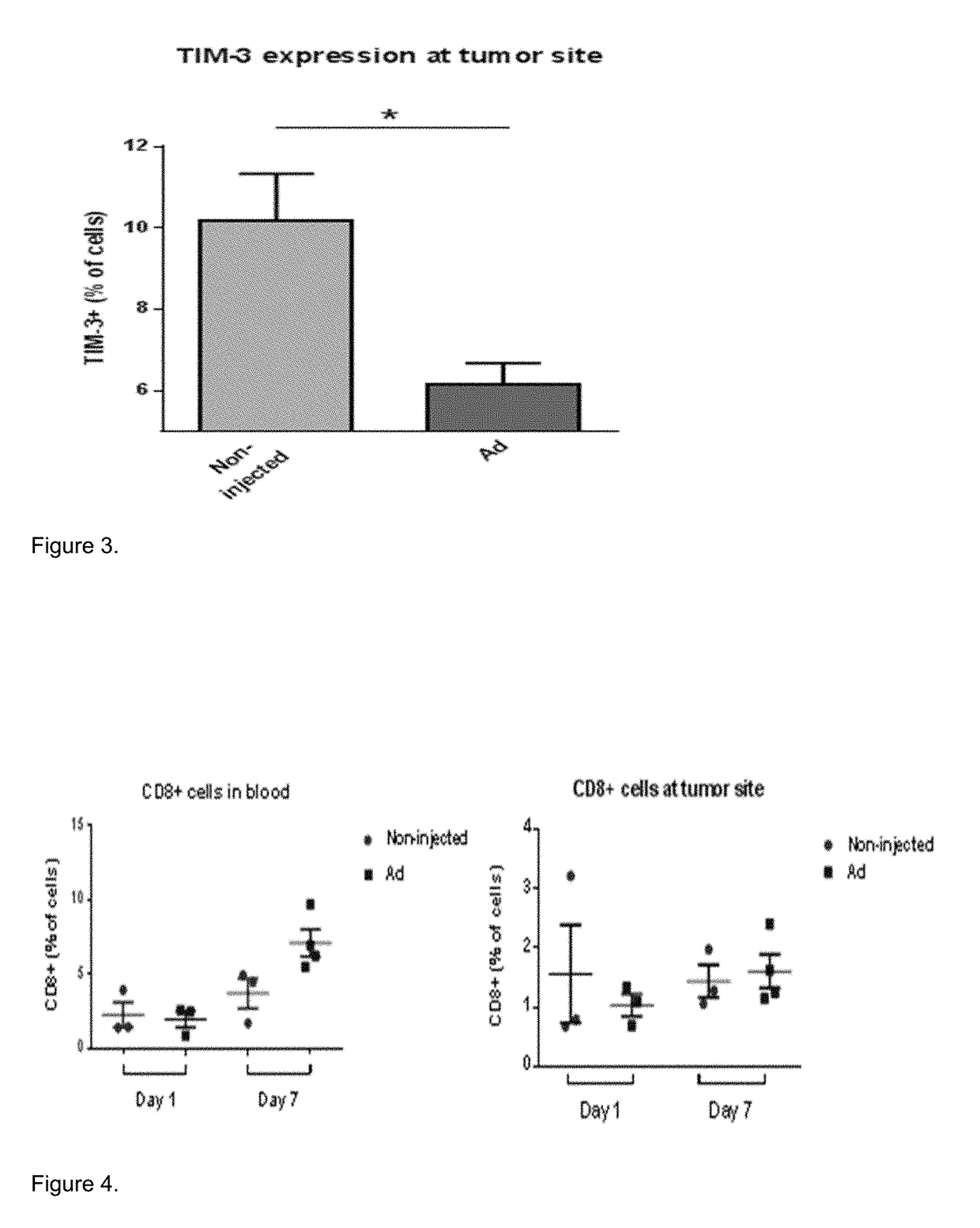Oncolytic adenoviruses coding for bi-specific antibodies and methods and uses related thereto
a technology of oncolytic adenoviral vector and monoclonal antibody, which is applied in the field of life sciences and medicine, can solve the problems of insufficient recruitment of t-cells to the tumor, and achieve the effects of reducing side effects, severe adverse events, and improving treatment
- Summary
- Abstract
- Description
- Claims
- Application Information
AI Technical Summary
Benefits of technology
Problems solved by technology
Method used
Image
Examples
examples
Materials & Methods
[0119]B16-OVA animal model: ovalbumin-expressing B16 cells (B16-OVA) were maintained in RPMI, 10% FBS, 5 mg / ml G418, 20 mM L-Glutamine, 1× Pen / Strep solution (GIBCO). 4-7-week-old C57BL / 6 immunocompetent female mice were implanted subcutaneously with 2.5×105 B16-OVA cells in 50 ul RPMI, 0% FBS, in the right flank, one tumor per mouse. Roughly ten days post tumor implantation (when tumors became injectable, ˜3 mm minimum diameter), mice were divided into groups and treated in some experiments on six consecutive days with intratumoral injections of either 50 ul PBS or 1×109 viral particles (VPs) of oncolytic adenovirus in 50 ul PBS. In other experiments, three injections were given on days 0, 2 and 4. As murine cells are nonpermissive to human adenovirus, multiple intratumoral virus injections were used to mimic virus replication-induced inflammation, (Blair et al., 1989).
[0120]Adoptive transfer: On the first day of the i.t. treatment, the mice also received by adop...
experiment 1 (
Treatment with Adenovirus Induces Danger Signals in Tumors):
[0124]Treatment with Ad5 / 3-d24-GMCSF 5 / 3 chimeric adenovirus induced danger signals in B16.OVA tumors. Binding of adenoviral pathogen-associated molecular patterns (PAMP) to toll-like receptors (TLR) on host cells induce secretion of interferon-γ, associated with immune cell activation and T-cell stimulation leading to rapid activation of innate and adaptive immune responses. Consequently, adenovirus can be used to generate an immunogenic tumor phenotype that is effectively recognized by the immune system. (FIG. 2)
experiment 2 (
Adenovirus has Anti-Immunosuppressive Effects in the Tumor Microenvironment):
[0125]5 / 3 chimeric adenovirus had anti-immunosuppressive effects on B16.OVA tumor microenvironment. Tumors were highly resistant to immune attack and even high numbers of tumor-specific OT-I T-cells did not overcome tumor immunosuppression. However, if mice were simultaneously treated with 5 / 3 chimeric adenovirus, immunosuppressive molecules (such as TIM-3) were downregulated in the tumors. (FIG. 3)
PUM
| Property | Measurement | Unit |
|---|---|---|
| time | aaaaa | aaaaa |
| time | aaaaa | aaaaa |
| time | aaaaa | aaaaa |
Abstract
Description
Claims
Application Information
 Login to View More
Login to View More - R&D
- Intellectual Property
- Life Sciences
- Materials
- Tech Scout
- Unparalleled Data Quality
- Higher Quality Content
- 60% Fewer Hallucinations
Browse by: Latest US Patents, China's latest patents, Technical Efficacy Thesaurus, Application Domain, Technology Topic, Popular Technical Reports.
© 2025 PatSnap. All rights reserved.Legal|Privacy policy|Modern Slavery Act Transparency Statement|Sitemap|About US| Contact US: help@patsnap.com



